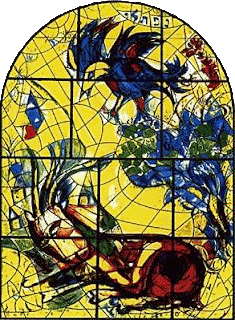 Zebulun was the sixth and final son of Jacob and Leah. Naphtali was Jacob's sixth son, the second with Bilhah. The tribes of Zebulun and Naphtali had received land that made them a target for invading enemies. Those lands had been annexed by various Assyrian kings. Living as a possession of the Assyrians had brought times of despair and anguish. Isaiah 9:1 promises that the time of gloom will one day end for the lands of Zebulun and Naphtali. God will break into their lives, bringing light and life.
Zebulun was the sixth and final son of Jacob and Leah. Naphtali was Jacob's sixth son, the second with Bilhah. The tribes of Zebulun and Naphtali had received land that made them a target for invading enemies. Those lands had been annexed by various Assyrian kings. Living as a possession of the Assyrians had brought times of despair and anguish. Isaiah 9:1 promises that the time of gloom will one day end for the lands of Zebulun and Naphtali. God will break into their lives, bringing light and life.Matthew 4:15 has Jesus moving to Capernaum, a fishing village on the northern shore of the Sea of Galilee in order to fulfill Isaiah's prophecy. For the gospel's audience, "Assyria" would be heard as "Rome," another empire that had taken control of Zebulun and Naphtali (and all the other tribes' lands, too).
Marc Chagall created a series of twelve stained glass windows for the Hadassah Medical Center in Jerusalem. Each window represents one of the twelve tribes. The windows are arranged in groups of three on four walls that create a square. Zebulun and Naphtali are pictured here, both the stained glass windows themselves and lithographs that Chagall created with the same designs.
Marc Chagall. Zebulun. (left, stained glass) Hadassah Medical Center. Jerusalem. (right, lithograph) from The Twelve Maquettes of Stained Glass Windows for Jerusalem
The Zebulun window is dominated by the color red and elements of life in, on, and around the sea. In the bottom left is a boat, symbol of a tribe who became noted for navigation, as the tribe's blessing from Jacob indicated:
13 ‘Zebulun shall settle at the shore of the sea; he shall be a haven for ships,
and his border shall be at Sidon. Genesis 49:13.
Fish jump toward one another above a horizon line that (in the lithograph anyway) features a lavender sun. The letters spelling out Naphtali's name arc across the top of the design.
Marc Chagall. Naphtali. (left, stained glass) Hadassah Medical Center. Jerusalem. (right, lithograph) from The Twelve Maquettes of Stained Glass Windows for Jerusalem
The Naphtali window, with a yellow background, also features elements of Jacob's blessing:
‘Naphtali is a doe let loose that bears lovely fawns. (Genesis 49:21)
The doe lies on the ground somewhat under a treeflies an eagle, symbol of freedom. At the right of the composition is a tree, while a bird of some kind (variously identified as an eagle or a rooster or the generic "bird"), which are often symbols of freedom. The small(er) letters spelling Zebulun are right against the top of the arch.
the people who sat in darkness have seen a great light, and for those who sat in the region and shadow of death light has dawned. It's good news whether it's in Isaiah or Matthew.






No comments:
Post a Comment